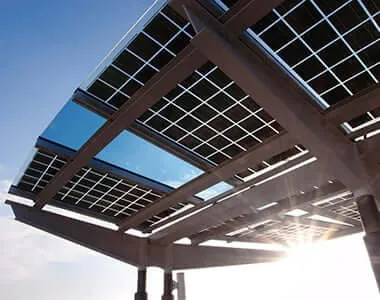solar panels how they are made
The Journey of Solar Panels From Raw Materials to Renewable Energy
As the world increasingly turns toward sustainable energy sources, solar panels have emerged as a crucial component in the fight against climate change. Understanding how solar panels are made not only highlights the intricate processes involved but also emphasizes the importance of renewable energy. This article explores the manufacturing journey of solar panels, from raw materials to finished products.
The creation of solar panels begins with the raw materials, primarily silicon. Silicon is the second most abundant element in the Earth's crust, and it is extracted from quartzite, a form of quartz. The first step in the manufacturing process involves transforming quartzite into metallurgical-grade silicon by heating it to high temperatures with carbon. This reaction removes impurities, resulting in a more refined form of silicon.
Once metallurgical-grade silicon is acquired, the next step is to convert it into polycrystalline or monocrystalline silicon wafers. Monocrystalline silicon is made from a single continuous crystal structure, while polycrystalline silicon consists of multiple crystal structures. The choice between these types largely depends on the energy efficiency and cost considerations. The silicon is melted and then cooled in a controlled environment to form a solid ingot, which is then sliced into thin wafers. These wafers serve as the foundational material for solar cells.
The solar cells are made by doping the silicon wafers with various impurities to create a positive and negative charge. Phosphorus is added to create the N-type layer, while boron is used for the P-type layer. This doping process generates an electric field within the wafer, which is essential for converting sunlight into electricity. The interaction between the two layers allows photons from sunlight to knock electrons loose, generating an electric current.
solar panels how they are made

After the solar cells are produced, they must be assembled into panels. This process begins with the placement of the solar cells onto a backing material, usually made of durable glass or plastic. The cells are arranged in a grid pattern and are electrically connected through metal conductive ribbon. This connection ensures the efficient transfer of electricity generated by each cell.
Once the cells are connected, they are encapsulated with a transparent layer, often made of ethylene-vinyl acetate (EVA). This layer protects the cells from environmental factors such as moisture, dust, and physical impact. Over the encapsulation, a layer of tempered glass is added, providing additional protection and enhancing the panel's durability. The edges are sealed to ensure that no moisture can penetrate the layers, which could lead to degradation of the solar cells.
After assembly, solar panels undergo rigorous testing to ensure quality and performance standards. This includes assessments of efficiency, durability, and fire safety. Once approved, they are prepared for shipment and installation.
The last phase of the solar panel lifecycle is installation, which involves placing the panels on rooftops or solar farms, where they can harness sunlight. When sunlight hits the panels, the energy generated is transformed into electricity that can be used in homes, businesses, or fed back into the power grid.
In conclusion, the production of solar panels is a complex but fascinating journey, beginning with raw materials like silicon and culminating in a vital technology that supports renewable energy. As the world seeks sustainable solutions to energy demands, understanding the manufacturing process of solar panels highlights their role in providing clean, renewable energy for future generations. Investing in solar technology not only contributes to a greener planet but also paves the way for energy independence and innovation.
-
Unlocking Energy Freedom with the Off Grid Solar InverterNewsJun.06,2025
-
Unlock More Solar Power with a High-Efficiency Bifacial Solar PanelNewsJun.06,2025
-
Power Your Future with High-Efficiency Monocrystalline Solar PanelsNewsJun.06,2025
-
Next-Gen Solar Power Starts with Micro Solar InvertersNewsJun.06,2025
-
Harnessing Peak Efficiency with the On Grid Solar InverterNewsJun.06,2025
-
Discover Unmatched Efficiency with the Latest String Solar InverterNewsJun.06,2025







